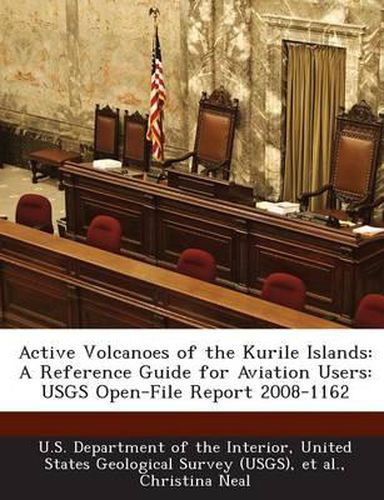Readings Newsletter
Become a Readings Member to make your shopping experience even easier.
Sign in or sign up for free!
You’re not far away from qualifying for FREE standard shipping within Australia
You’ve qualified for FREE standard shipping within Australia
The cart is loading…






Introduction: The many volcanoes of the remote and mostly uninhabited Kurile Island arc (fig. 1; table 1) pose a serious hazard for air traffic in the North Pacific. Ash clouds from Kurile eruptions can impact some of the busiest air travel routes in the world and drift quickly into airspace managed by three countries: Russia, Japan, and the United States. Prevailing westerly winds throughout the region will most commonly send ash from any Kurile eruption directly across the parallel North Pacific airways between North America and Asia (Kristine A. Nelson, National Weather Service, oral commun., 2006; fig. 1). This report presents maps showing locations of the 36 most active Kurile volcanoes plotted on Operational Navigational Charts published by the Defense Mapping Agency (map sheets ONC F-10, F-11, and E-10; figs. 1, 2, 3, 4). These maps are intended to assist aviation and other users in the identification of restless Kurile volcanoes. A regional map is followed by three subsections of the Kurile volcanic arc (North, Central, South). Volcanoes and selected primary geographic features are labeled. All maps contain schematic versions of the principal air routes and selected air navigational fixes in this region.
$9.00 standard shipping within Australia
FREE standard shipping within Australia for orders over $100.00
Express & International shipping calculated at checkout
Introduction: The many volcanoes of the remote and mostly uninhabited Kurile Island arc (fig. 1; table 1) pose a serious hazard for air traffic in the North Pacific. Ash clouds from Kurile eruptions can impact some of the busiest air travel routes in the world and drift quickly into airspace managed by three countries: Russia, Japan, and the United States. Prevailing westerly winds throughout the region will most commonly send ash from any Kurile eruption directly across the parallel North Pacific airways between North America and Asia (Kristine A. Nelson, National Weather Service, oral commun., 2006; fig. 1). This report presents maps showing locations of the 36 most active Kurile volcanoes plotted on Operational Navigational Charts published by the Defense Mapping Agency (map sheets ONC F-10, F-11, and E-10; figs. 1, 2, 3, 4). These maps are intended to assist aviation and other users in the identification of restless Kurile volcanoes. A regional map is followed by three subsections of the Kurile volcanic arc (North, Central, South). Volcanoes and selected primary geographic features are labeled. All maps contain schematic versions of the principal air routes and selected air navigational fixes in this region.